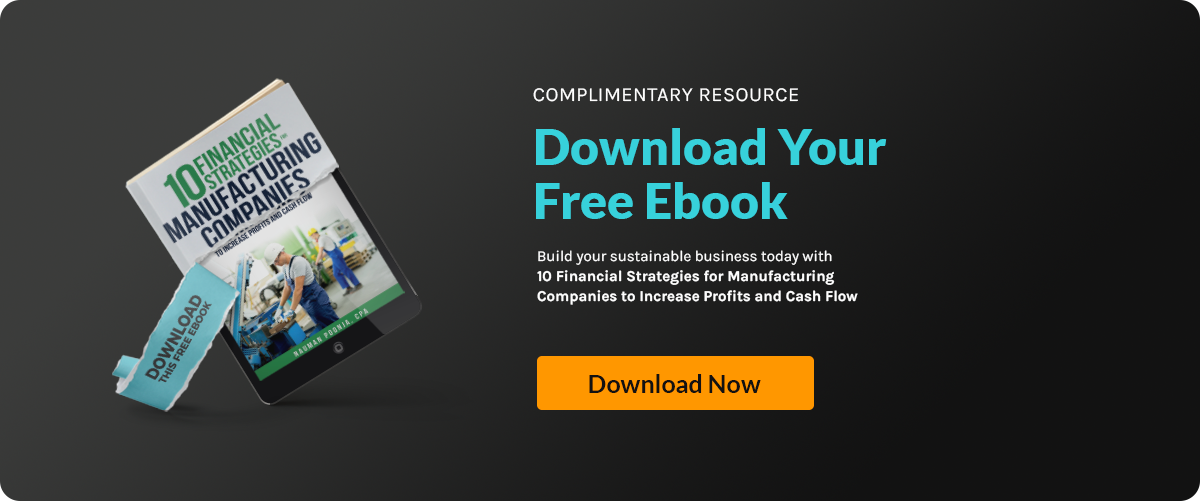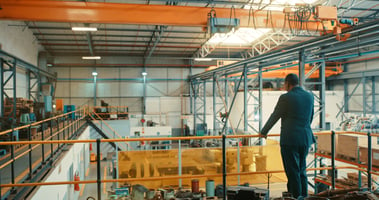Manufacturing isn’t just about machining parts or assembling products—it’s also about maintaining...
Mastering Best Practices for Chart of Accounts in Manufacturing
Managing the financial aspects of a manufacturing business involves paying close attention to many details. Over 60% of small business owners lack deep knowledge of finance and accounting in their operations. One essential tool is the Chart of Accounts (COA), which serves as the backbone of financial accounting, offering a structured approach to categorize and record financial transactions. Following best practices for setting up your chart is essential for accurate financial reporting and to support a growing business.
Understanding the Importance of Chart of Accounts
A chart of accounts is a comprehensive listing of all the accounts in a company’s financial system, each with a unique number to streamline the organization and tracking of financial information. This basic structure is vital for constructing an effective chart that facilitates precise financial reporting. It's the foundation for a COA structure that works efficiently, linking directly to the general ledger and enhancing the clarity of your financial status.
Implementing Best Practices for Chart of Accounts
Customizing Your Chart of Accounts for Manufacturing
Tailoring your COA to align with the specific operations and financial reporting requirements of a manufacturing business ensures your company’s financial transactions are captured effectively. This customization is a best practice that supports the dynamic needs of a growing business. It also allows for a numbering structure that enhances the organization and retrieval of financial data.
Account Categories for Manufacturing Businesses
Recommended account categories for a manufacturing company include not just the basic chart elements like revenue and expense accounts, but also accounts receivable, payable, and equity accounts. These categories are fundamental to segregating transactions for accurate analysis and reporting, laying down a COA structure that accommodates detailed scrutiny of financial activities.
Examples Chart of Accounts for a Manufacturing Businesses
A well-designed COA for a manufacturing business may feature parent accounts with sub-accounts, providing deep insights into business operations and financial activities. This level of detail supports effective financial reporting and is crucial for a COA that adapts to the evolving landscape of a growing business. It exemplifies the best practice in COA structure, with a focus on a numbering system that aids in efficient account management.
Common Challenges in Creating a Chart of Accounts
When establishing a Chart of Accounts (COA), several hurdles can complicate the process, impacting efficiency and financial clarity. Here's what to watch out for:
1. Complexity Overload
Striking a balance is key. While detailing is crucial, going overboard with subcategories can lead to an intricate and cumbersome COA. This complexity makes it difficult to quickly access vital financial information. Instead of having separate accounts for every transaction or utility, strive for simplicity with a straightforward numbering system to ensure clarity and ease of use.
2. Insufficient Detail
On the flip side, a COA lacking sufficient detail can obscure financial insights. Broad categories might mask spending patterns and mislead financial assessments. For instance, grouping all expenses into one could hinder recognizing specific overspending areas. By segmenting into subcategories such as payroll, travel, and product costs, you gain a clearer view of financial health and can optimize expenses more effectively.
3. Premature Account Deletion
Consistency is crucial for financial reporting and analysis. Hastily deleting or altering accounts can disrupt continuity and cause issues, particularly around reporting season. To maintain consistency, it’s advisable to wait until year-end to phase out obsolete accounts, as restoring deleted items is more challenging than adding new ones.
4. Inflexibility to Change
A stagnant COA can lead to discrepancies between your financial reporting and actual business operations. As your business evolves, so should your COA. Regularly revisiting and revising categories ensures that your accounts reflect current business activities and structures, thereby maintaining accuracy and relevance in financial reporting.
By navigating these challenges thoughtfully, businesses can create a more efficient and accurate Chart of Accounts that serves as a robust financial tool.
Utilizing Accounting Software for Chart of Accounts
Accounting software simplifies the setup, management, and maintenance of your chart, offering customization, automation, and seamless integration with other financial systems. Regular reviews and updates of your COA through accounting software ensure the financial data remains accurate, reflecting best practices in maintaining a COA that meets the needs of your business. This is essential for the continuous alignment of the COA with your business's changing financial landscape.
Potential Issues with an Overcomplicated Chart of Accounts
An overly complex chart of accounts can significantly hinder financial management and clarity in your business. Here’s how:
- Loss of Clarity: When your chart is bogged down with excessive subcategories or detailed accounts for every distinct product and utility, it becomes challenging to glean actionable insights quickly. Instead of an at-a-glance view, you face a tangled web of unnecessary details.
- Management Nightmare: Keeping track of intricate numbering systems or numerous account subsets can be a managerial headache. The more complex the system, the harder it is to ensure consistency and accuracy in your financial tracking, leading to potential errors and miscommunication.
- Time-Consuming Maintenance: An elaborate chart requires more time for data entry and regular maintenance. This inefficiency diverts valuable resources away from strategic financial analysis and decision-making.
- Reduced Flexibility: A convoluted system makes it difficult to adapt quickly to business changes. Restructuring your chart to accommodate growth or changes in your product lines can be a daunting task.
- Diminished Usability for Stakeholders: Investors, auditors, and other external parties may find it difficult to understand complex accounts, leading to increased questions and potential misinterpretations of your financial health.
By understanding these issues, businesses can aim to streamline their chart of accounts, ensuring it remains a powerful tool for strategic insight rather than a cumbersome hindrance.
Optimizing Chart of Accounts for Financial Reporting
The COA is foundational for generating key financial statements like the balance sheet and income statement. Its organization is critical for ensuring accurate financial reporting, which in turn, offers a clear picture of the company’s financial health. Adopting a COA structure that works for your business, along with a consistent review and update policy, is essential for maintaining this clarity as your business grows.
Continuous Improvement of Chart of Accounts
Best Practices for Business Growth
As your manufacturing business evolves, continuously reviewing and updating your chart to reflect operational and financial changes is critical. This best practice ensures that your COA remains relevant, accurate, and aligned with the unique requirements of your business, thereby supporting informed decision-making and sustainable growth.
Adding and Adjusting Accounts
Regularly introducing new accounts and adjusting existing ones is crucial for a COA that accurately reflects the current state of your manufacturing company. This is a fundamental aspect of following best practices for COA management, ensuring that your financial reporting remains precise and reliable as your business expands.
Alignment with Manufacturing Business Needs
Ensuring that your chart of accounts stays in sync with the changing operational and financial needs of your manufacturing company is vital for effective financial management. A COA structure that is both dynamic and responsive to business changes not only enhances the accuracy of financial reporting but also supports the strategic planning and execution of growth initiatives.
Maximize Your Manufacturing Business Profitability with Accounovation
At Accounovation, we specialize in serving manufacturing companies like yours, offering comprehensive services as your fractional CFO, accounting team, bookkeeping, and tax experts. Our deep understanding of the manufacturing sector enables us to provide tailored solutions that not only aim to maximize your profitability but also identify opportunities for business improvement.
Whether you're looking to streamline your financial processes, enhance your financial reporting, or seek strategic financial advice, our team is equipped with the expertise to support your goals. Contact us today to discover how our financial expertise can support your manufacturing business. Embrace the future of your manufacturing business with Accounovation by your side, ensuring every financial decision is a step towards greater success.
Frequently Asked Questions
How important is it to set up a chart of accounts for your manufacturing business?
Setting up a COA is crucial for a manufacturing business as it helps in tracking financial transactions, generating accurate financial statements, and making informed business decisions.
What are the basic components of a chart of accounts?
The basic components of a COA include account types, account names, account numbers, and their relationship to the general ledger.
How does the chart of accounts work with a manufacturing company's financial statements?
The chart of accounts categorizes transactions into specific accounts that are then summarized in the financial statements such as the income statement and balance sheet.
How can I ensure that my chart of accounts is structured correctly for a manufacturing business?
Structure your COA to align it with your company's financial accounts, set up separate accounts for different transactions, and regularly review and adjust the accounts as your business grows.
What are some common account types that should be included in a manufacturing company's chart of accounts?
Common account types include income accounts, expense accounts, asset accounts, liability accounts, and equity accounts specific to manufacturing operations.







